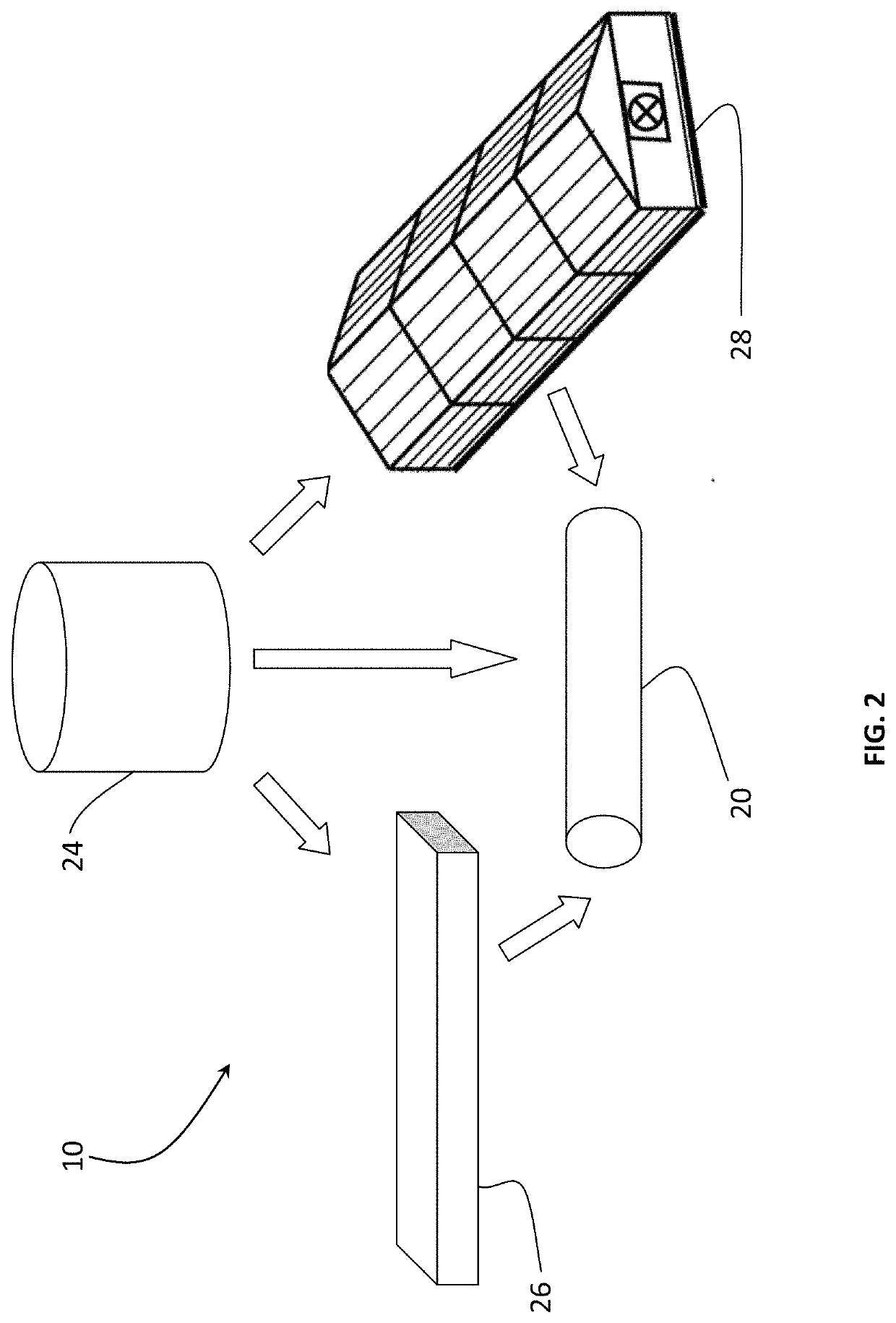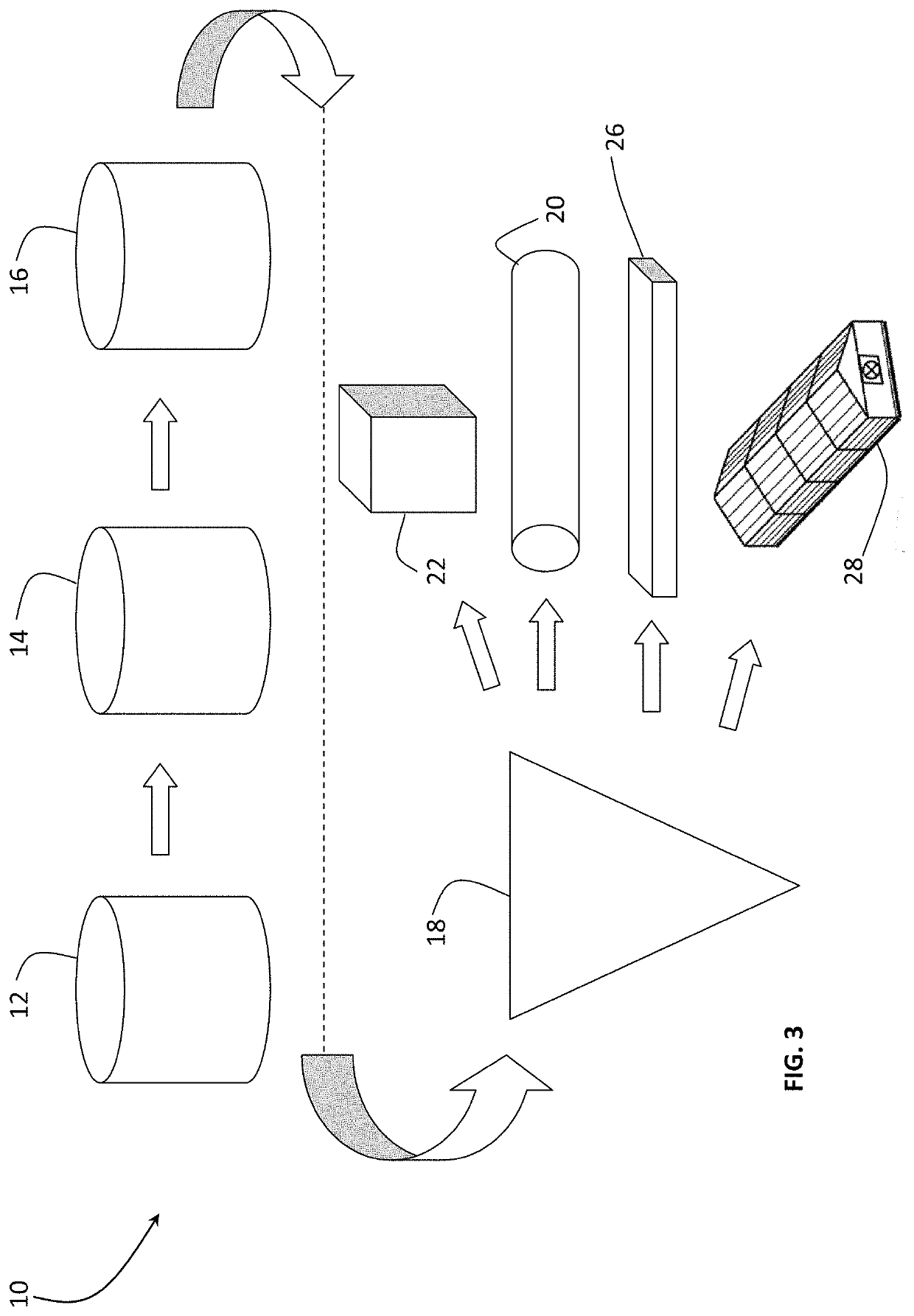Systems, Methods, and Compounds for Sustainable Wastewater Treatment and Co-Products Thereof
- Summary
- Abstract
- Description
- Claims
- Application Information
AI Technical Summary
Benefits of technology
Problems solved by technology
Method used
Image
Examples
Embodiment Construction
[0036]To ensure that one skilled in the art will fully understand and, in appropriate cases, be able to practice the present invention, certain preferred embodiments of the wastewater treatment method, system, and compounds revealed herein are described below and shown in the accompanying drawing figure. It will be understood, however, that the wastewater treatment systems, compounds, and methods are subject to a variety of further embodiments, each within the scope of the invention.
[0037]In one practice of the disclosed method for wastewater treatment, a volume of wastewater to be treated is provided, whether by being received into one or more vessels or other retaining areas, by its preexistence as a body of water, or otherwise. The volume of wastewater to be treated can be calculated, whether by measurement using a flow meter, by receipt into a vessel or vessels of known volume, by mathematical calculation, or by some other method or combination thereof. If and as necessary, the ...
PUM
 Login to View More
Login to View More Abstract
Description
Claims
Application Information
 Login to View More
Login to View More - R&D
- Intellectual Property
- Life Sciences
- Materials
- Tech Scout
- Unparalleled Data Quality
- Higher Quality Content
- 60% Fewer Hallucinations
Browse by: Latest US Patents, China's latest patents, Technical Efficacy Thesaurus, Application Domain, Technology Topic, Popular Technical Reports.
© 2025 PatSnap. All rights reserved.Legal|Privacy policy|Modern Slavery Act Transparency Statement|Sitemap|About US| Contact US: help@patsnap.com



